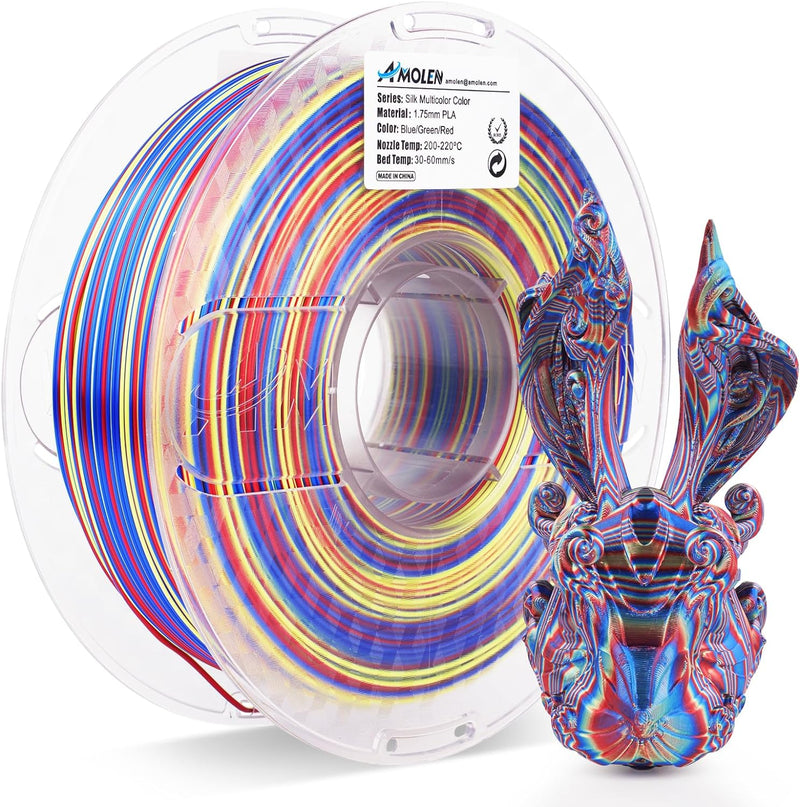Unlock Your Printing Potential: Discover the Secrets to Perfect Prints!
In the world of 3D printing, silk PLA filament has emerged as a popular choice among enthusiasts and professionals alike. Renowned for its glossy finish and vibrant colors, it provides prints that are not only aesthetically pleasing but also functional. However, as with any advanced material, users often face specific challenges that can hinder their printing experience. These issues can range from minor inconveniences to significant roadblocks that affect the quality of the final product. This article aims to delve into the common problems associated with silk PLA filament printing and offer practical solutions to enhance your printing quality and performance. Whether you're a novice or an experienced printer, understanding these challenges and their solutions can unlock your full printing potential.

Understanding Silk PLA Filament
Silk PLA filament is a unique variation of standard PLA (Polylactic Acid), known for its remarkable sheen and smooth finish. This filament typically incorporates additives that give it a glossy appearance, making it an excellent choice for decorative prints and models that require a high-quality finish. One of the standout features of silk PLA is its ease of use, which allows it to be printed at relatively low temperatures compared to other materials. This characteristic makes it highly accessible for beginners. Additionally, silk PLA has a lower tendency to warp, which is a common issue with other filaments. However, the very properties that make silk PLA desirable can also lead to specific challenges, particularly in achieving the desired print quality. Understanding these properties is crucial for addressing the potential problems that may arise during the printing process.
Common Printing Problems with Silk PLA
Despite its advantages, users frequently encounter a range of issues when printing with silk PLA filament. One of the most common problems is clogging, often resulting from the filament's unique composition. Clogging can occur if the nozzle temperature is not adequately adjusted or if there are impurities in the filament. Poor adhesion is another issue, where prints struggle to stick to the build surface, leading to warping or failed prints. Inconsistent extrusion is also a recurring problem, where the filament may not feed smoothly through the nozzle, resulting in uneven layers or gaps in the print. These challenges can be frustrating, especially for those who are eager to create stunning 3D models. A friend of mine once spent hours designing a beautiful vase only to find that it had warped during printing due to adhesion issues. Such experiences highlight the importance of understanding and addressing these common silk PLA printing problems.
Solutions to Printing Problems
Fortunately, many of the issues associated with silk PLA filament can be mitigated through careful adjustments and best practices. For instance, ensuring that the nozzle temperature is set correctly is vital; silk PLA typically prints best between 200°C to 220°C. Users should also consider calibrating their printers regularly, which can help maintain consistent extrusion and avoid clogs. Another effective strategy is to utilize a good quality build surface. Smooth surfaces like glass or PEI can enhance adhesion significantly. Additionally, using a heated bed can help keep the print at a stable temperature, reducing the risk of warping. When my friend adjusted her bed temperature and cleaned the nozzle, she saw a remarkable improvement in print quality. Implementing these adjustments can make a significant difference in achieving flawless prints with silk PLA.
Choosing the Right Accessories
Having the right accessories can significantly enhance the printing experience with silk PLA filament. Specialized nozzles, such as those with a larger diameter, can help prevent clogging by allowing for a smoother flow of filament. Additionally, build surfaces specifically designed for silk PLA can provide better adhesion and reduce the likelihood of warping. Another helpful accessory is a filament dryer; as silk PLA can be sensitive to moisture, keeping it dry can prevent issues related to inconsistent extrusion. My friend discovered that using a filament dryer not only improved her prints' quality but also extended the life of her filament. Investing in the right accessories tailored for silk PLA can ultimately lead to better printing outcomes.
Maintenance Tips for Successful Printing
Maintaining both your 3D printer and filament is essential for optimal performance and longevity. Regularly cleaning the nozzle and ensuring it is free from obstructions can prevent clogs. Additionally, users should store silk PLA filament in a cool, dry place, preferably in airtight containers with desiccant packs to absorb moisture. Regularly inspecting the printer for wear and tear and replacing parts as needed can also ensure it runs smoothly. Proper maintenance extends not just the life of the printer but also the quality of the prints produced. After implementing a maintenance routine, my friend found her prints were consistently of higher quality, demonstrating the importance of upkeep in the 3D printing process.
Enhancing Your Silk PLA Printing Experience
In summary, silk PLA filament offers a unique set of properties that can elevate your 3D printing projects, but it also comes with its own set of challenges. By understanding the common printing problems and implementing the recommended solutions, users can significantly improve their printing experience. From adjusting temperature settings to utilizing the right accessories and maintaining the printer, each step contributes to achieving the perfect print. I encourage all users to experiment with these tips and discover the transformative impact they can have on your 3D printing journey. With a little knowledge and the right practices, you can unlock your printing potential and create stunning models that showcase the beauty of silk PLA.








